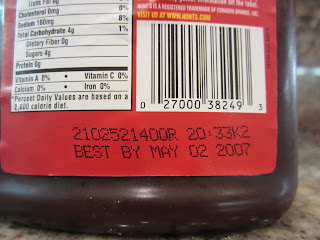 |
| Mm... Dark. |
Nice looking dark beer. The head might be a bit thin, but it’s definitely got that porter color and consistency. The aroma makes you think of chocolate but the real culprit, and this becomes even more evident when you sip it, is caramel malt with a splash of chocolate malt (which contains zero cocoa, by the way). The mouthfeel is kind of thin. This is probably due to the variety of yeast they used, but the lack of black patent notes diverting your attention could be exacerbating it too. It’s easy to drink this beer and think, “This just doesn’t kick enough!” However, the company’s own description talks of a brew that is softer than other porters, so it’s not meant to punch you in the face. I would say the most disappointing thing about Bully Porter is not the stuff in the bottle, but the bottle’s screw top cap, which keeps me from being able to refill it with my own concoctions.
 |
| Damn you screw top! |
So, is this Paul Ryan’s zymurgic doppelgänger? I’m going to have to say no. The small head may go with his just-the-facts motif, but the sweetness isn't becoming of a rough-and-tumble upstart. It doesn’t hit you like inconvenient truths about national finances. It doesn’t galvanise beer drinkers like a no-sugar-coating call to action. You could argue that it is misleading, but the brewer acknowledges this up front. Bully Porter is not Paul Ryan but maybe there is another. Perhaps the oatmeal stout? We’ll see...











